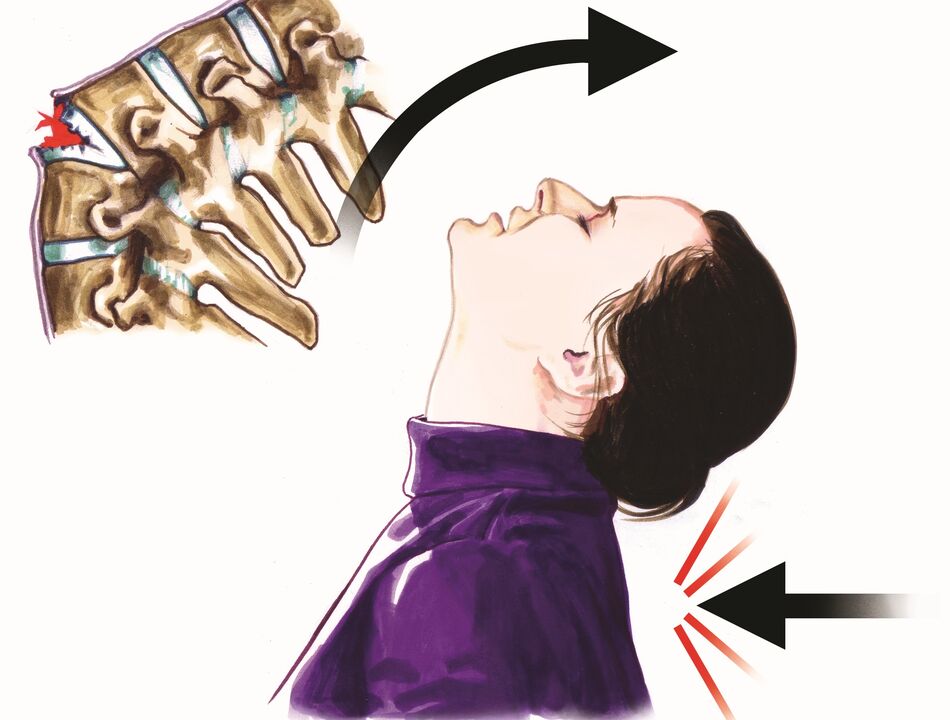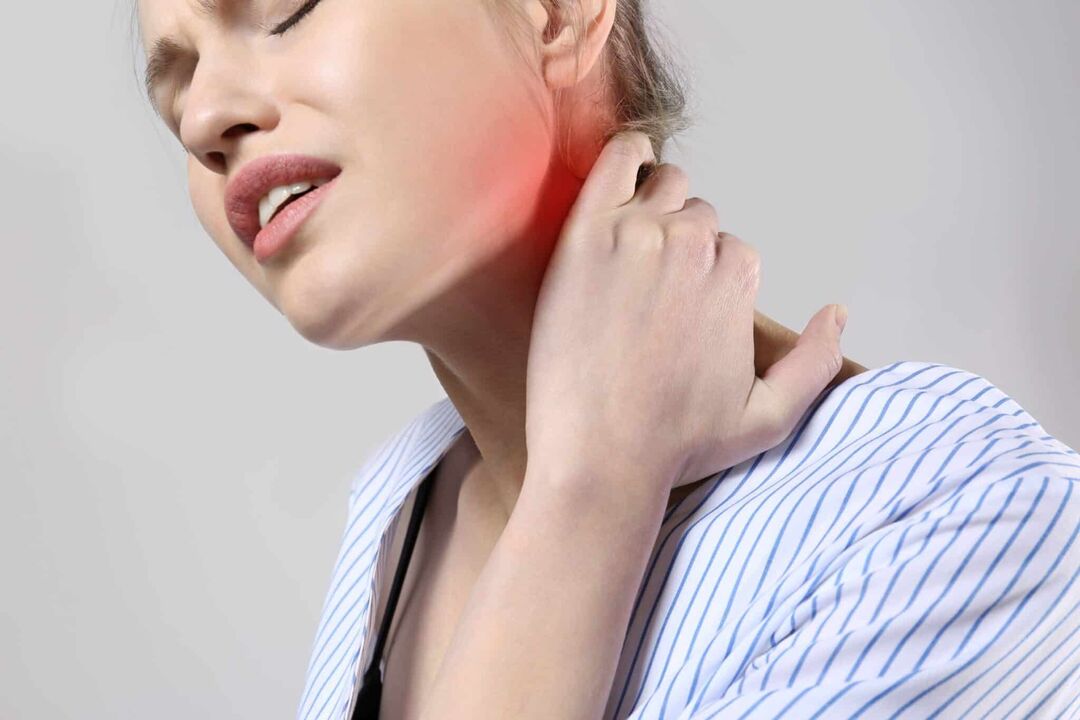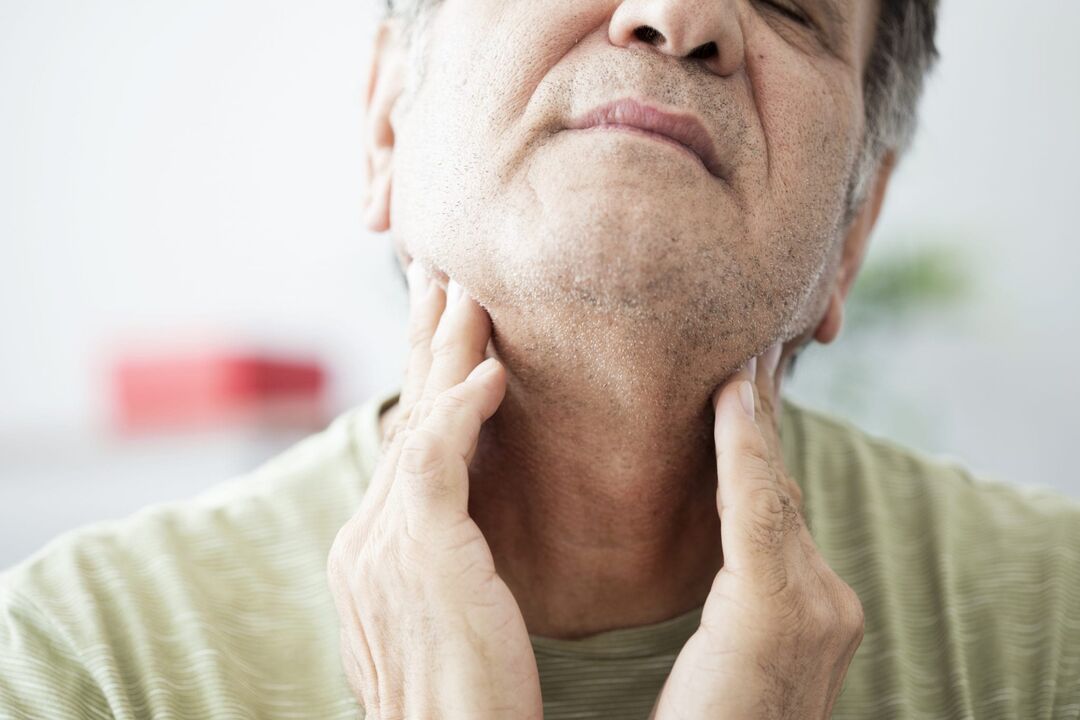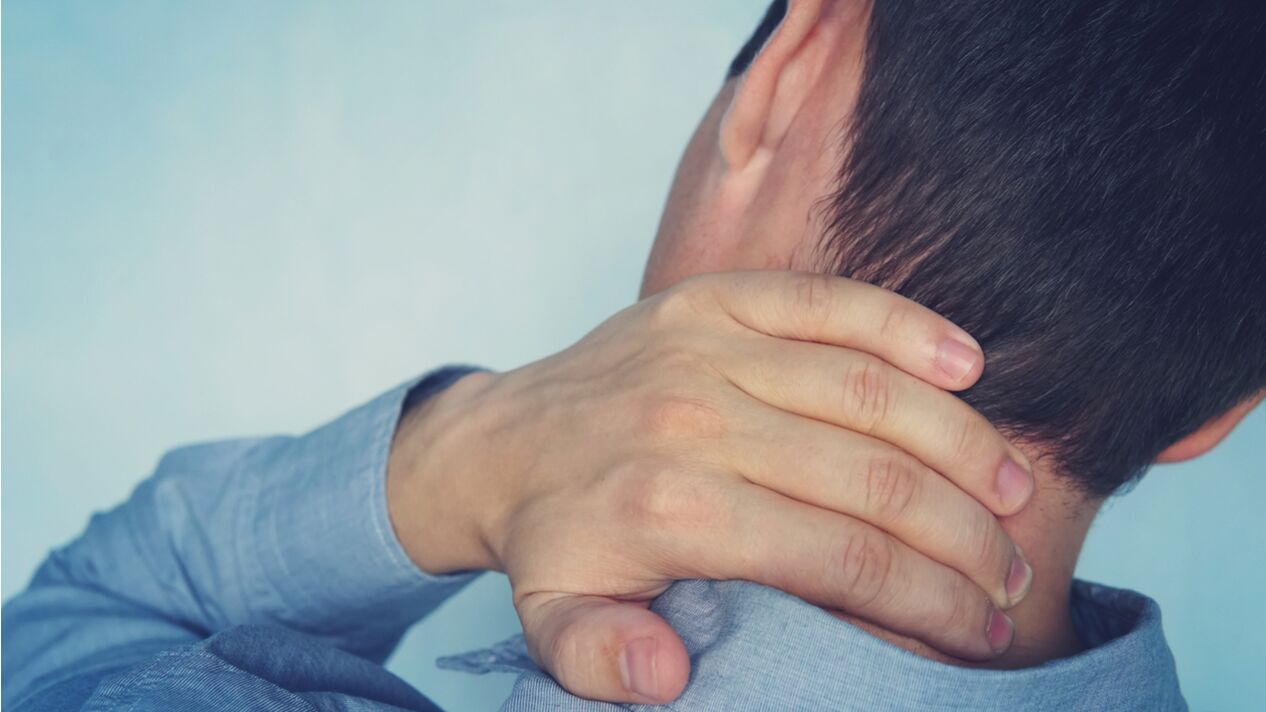
The neck is made up of vertebrae that run from the skull to the upper body. The cervical discs absorb impacts between the bones. Bones, ligaments, and muscles support the head and allow it to move. Any abnormality, abnormality, inflammation, or trauma can result in pain or stiffness in the neck area. At such moments, it is difficult to immediately determine what is causing the neck to hurt and take action.
Many people sometimes experience discomfort or stiffness in this area, mostly due to poor posture or excessive exertion. In most cases, neck pain is not a serious condition and can be resolved within a few days. However, in some cases, such a symptom can indicate a serious illness and requires medical consultation.
This article will help you find out why the neck hurts on the right side as well as other areas. A classification of the types of pain and their most common causes is also made. Think about how to get rid of discomfort in this part of the spine.

Types of pain in the neck area
In order to prescribe effective treatment, it is necessary for a specialist to accurately determine the symptoms and causes of the pathology. Doctors classify neck pain as follows:
- Cervicago - lumbago;
- cervicalgia.
The latter type is pain caused by damage to the vertebrae or neck muscles. Cervicalgia, in turn, can be divided into pain:
- related to skin lesions (superficial somatic);
- related to muscle or vertebral damage (deep somatic);
- related to the occurrence of infection or disruption of the work of internal organs (visceral) in the body.
Cervicalgia, which affects the adjacent areas, is divided into:
- with cervicobrachialgia (pain goes from the neck to the shoulders);
- to cervicocranialgia (pain goes from the neck (through the back of the head) to the head).
Speaking of cervicago, it is worth noting that this pain is always acute and restricts the mobility of the neck. It occurs suddenly and torments a person for a period of time, making it impossible for them to think about anything else.
In order to determine why the neck hurts, it is extremely important that the doctor determines its condition and describes it using the listed classification.

Common causes
Based on medical statistics, people seeking medical help for neck pain are most commonly diagnosed with a number of the following diseases and conditions:
- cervical osteochondrosis;
- Osteoporosis;
- Muscle cramp;
- Disc prolapse;
- Inflammation of the lymph nodes;
- systemic diseases of the body (infectious processes, tumors, problems with the immune system).
However, pain cannot be caused solely by the presence of a disease. Symptoms can also be caused by muscle tension or stretching (from sitting at the computer for long periods of time, driving a car, lifting weights, uncomfortable posture when sleeping or exercising). In addition, discomfort may arise due to the fact that a person has a headache closer to the neck.
Why is this happening and what is the cause? Only a specialist can answer this question. Sometimes people trying to get rid of discomfort take self-medication - massage, antibiotics, pain relievers, and other drugs. However, the consequences of such actions may not be the most beneficial.
It should be understood what the diseases and conditions listed above are and how they can be dangerous and why you cannot treat them yourself.

Cervical osteochondrosis
The appearance of this pathology in humans is associated with anatomical peculiarities. The dimensions of the cervical vertebrae are much smaller than the bone structures of other segments of the spine. The neck is constantly stressed, and that's because its main functions are to support the head and allow it to move. If a person asks why the neck hurts from behind, they need to consult whether they have osteochondrosis in that part of the spine.
The symptoms of this disease can be as follows:
- Pain from the neck to the shoulder that extends to the outer surface of the shoulder, forearm, and hands.
- Piercing pain in the neck or back of the head (especially worse in the morning, when moving the head, coughing, etc. ).
- Headache (paroxysmal or persistent, dull, impulsive, made worse by turning the head), dizziness, blurred vision, ringing in the ears.
- Chest muscle pain.
- There is a violation of the blood flow to the cerebral arteries, sometimes causing a temporary loss of consciousness. If the state of health worsens, speech and motor skills can be impaired.
It is not worth treating this disease yourself, since the consequences of such actions can be far from pleasant. However, when one turns to professionals one can be assured that the therapy will be of high quality and effective.
Typically, treatment for cervical osteochondrosis can include the use of various anti-inflammatory and pain relievers drugs, gels and fortifying ointments, physical therapy, and health exercises. Various medical patches, etc. can be used.
osteoporosis
This is a bone disease that occurs when the bones lose their density. This makes them weak and can break if dropped or knocked lightly. It is most common in women going through menopause, but habits such as smoking, heavy drinking, and poor diet and sedentary lifestyle increase the risk of it occurring.

For many people, formulating such a diagnosis can be the answer to the question of why the neck hurts from behind and at the same time hurts the arms and shoulders.
Doctors distinguish three stages of this disease. The first stage assumes that a person begins to experience such changes in the cervical spine, as there is a decrease in vertebral density, mild cramps, weakness and pain. In the second stage, constant headaches appear, the pressure can drop sharply and rise above normal, numbness in the hands and general weakness appear. The third stage (the most difficult) assumes that a person suffers severe deformities in the vertebrae, a hump can appear in the collar area, and headache and neck pain become constant companions.
Treatment for osteoporosis is aimed at slowing or preventing its development, maintaining bone mineral density, and relieving pain. This is achieved through the use of dietary supplements and medicines, as well as revising a person's lifestyle in favor of light but constant loads (walks, sports) and proper nutrition.
Muscle cramp
Why does the neck hurt on the left side? The cause can be a spasm. Not only does it occur on the left, but it can affect the right and back of the neck area. This is due to the involuntary contraction of the muscles as a result of intense exertion. The situation often causes severe pain that lasts from minutes to several days.
When asked why the neck muscles ache, a person should think about how they sleep, work, and sit. Cramps often occur due to a violation of the natural position of the body, the transfer of weights to the shoulders, including bags, hunched shoulders, and other conditions (including serious illness).
Pain relievers can then help relieve neck pain, relieve muscle tension, and reduce inflammation. However, they must be taken following the instructions provided and with the knowledge of the doctor. If you are unsure whether the neck pain is caused by a spasm, do not take any medication before consulting a specialist. In this case, you can place an ice pack (wrapped in a towel) on the back of your neck to temporarily relieve the pain.
Always remember that it is very difficult to independently determine what is hurting your neck. If the symptoms persist or worsen, this can be a very serious reason to seek medical attention.
disc prolapse
This element is a strong ligament that connects one vertebral bone to another. The intervertebral discs are cushioning pads between each vertebra in the column. A hernia in the cervical spine can develop if too much pressure is exerted on a healthy disc (carrying heavy loads, falling from a great height).
Symptoms of this condition usually include severe pain that can spread to one or both arms or legs, numbness or tingling in the extremities, muscle weakness, and loss of sensation. Initially, a person may not understand why the neck hurts when turning, bending, or other habitual movements. Over time, however, the symptoms become unbearable. Some people may not have neck or back pain with a herniated disc. Where the symptoms are manifested depends on where exactly the pathology is located.
Treatment for a herniated disc depends on the severity of the condition and the damage that is visible. In most cases, people's condition improves within six weeks of their first visit to the doctor. In many cases, medication and high-quality physiotherapy are sufficient. In therapy, drugs can be used to control pain and reduce muscle spasms.
Inflammation of the lymph nodes
Typically, such pathologies result from exposure to bacteria or viruses. When these changes occur in the body, it is not difficult to understand why the neck hurts on the left or right, since these areas are where the lymph nodes are located. They may swell like a cold in response to an upper respiratory infection. Concomitant symptoms that can occur with edema are cough, tiredness, chills, runny nose, profuse sweating.

What does the throat hurt when there is inflammation of the lymph nodes? The answer is simple: the pathological process involves the nerve endings that send pain signals.
Treatment for such a condition usually involves identifying its nature (virus, infection, bacteria, tumor). Then the doctor will prescribe drugs to treat the cause, which will have a positive effect on eliminating the inflammatory process.
Various systemic disorders in the body
Sometimes people may not understand why the neck and head ache, from which these sensations go to the back or arms. Often times, this condition can be caused by some systemic disorders in the body. These include various tumors, depression, arthritis, infectious processes, meningitis, internal bleeding and other serious pathologies.
Pain in the throat area can also occur if the body does not receive some useful substances (vitamins, micro and macro elements) in the required amount.
According to the results of tests and further studies, only the doctor will answer why the neck hurts at the front and back or why muscle problems and headaches are felt. The cause can be the poor condition of other organs, not just the collar area.

diagnosis
The first thing that needs to be done to determine the cause of neck pain is to see a therapist. He will appoint the necessary consultation with other specialists and determine the need for technological methods of diagnosis.
The specialist will explain why the neck hurts on the right, left or any other part of it. He will take a complete medical history and determine what disorders are currently taking place in the body.
During the examination, the following diagnostic methods can be assigned to a person:
- MRI;
- CT;
- EKG;
- Ultrasonic.
MRI can help determine the condition of the tissue, CT scan - to identify pathologies in the cervical vertebrae, ultrasound is required to examine the ring of arteries, vessels and surrounding tissues, as well as an EKG so that the doctor can examine various cardiac pathologiescan exclude.
In addition, one of the mandatory tests is the examination of the patient's blood, which will help determine whether there are inflammatory or infectious processes going on in the body.
What to do?
Every person in pain wants to get rid of it as soon as possible. The following can help with neck problems:
- Apply ice to the sore area (first wrap a towel).
- If overexertion causes mild pain, temporarily stop heavy physical activity and give your neck muscles time to rest.
- It is necessary to do light neck exercises (slow bends and twists) throughout the day.
- You should control your posture so as not to aggravate the situation with additional strain on the muscles and vertebrae.

If the pain persists within a day or two, see a doctor who will determine why the neck is sore. If symptoms such as swollen lymph nodes, fever, numbness or tingling, swelling, nausea and the inability to move of the head or limbs are added, you should call an ambulance immediately or see a specialist yourself.
prophylaxis
In order not to wonder why the neck hurts closer to the head, in other places, or muscle spasms, it is important to monitor your health and follow a number of the following recommendations:
- All you need to do is sleep on comfortable pillows that will allow your cervical spine to relax in peace. The best way to avoid neck and back problems is to buy an orthopedic pillow.
- The best position for comfortable rest of the entire spine is the supine position. You should train yourself to fall asleep in this position.
- You need to choose the correct chair height and monitor position when using your computer.
- It is not worth spending a long time texting, playing games or reading on mobile devices. This leads to excessive strain on the neck (most often the head is lowered during this activity, which leads to disruptions in the work of this part of the spine).
- It is important to pay attention and find time for exercise, walks in the fresh air, and sports.
- You should adjust your diet and diet. It is very important that the body receives the necessary amount of nutrients throughout the day.
- It is best to give up bad habits (overeating, smoking, alcohol and drug use).
diploma
After considering the main reasons behind the neck pain, we can determine that it is unlikely that the problem can be diagnosed and corrected on your own. So it is important not to hesitate. You need to see a specialist right away, even if your neck pain can be tolerated. It is worth remembering that even minor discomfort can indicate dysfunction of the body.














































